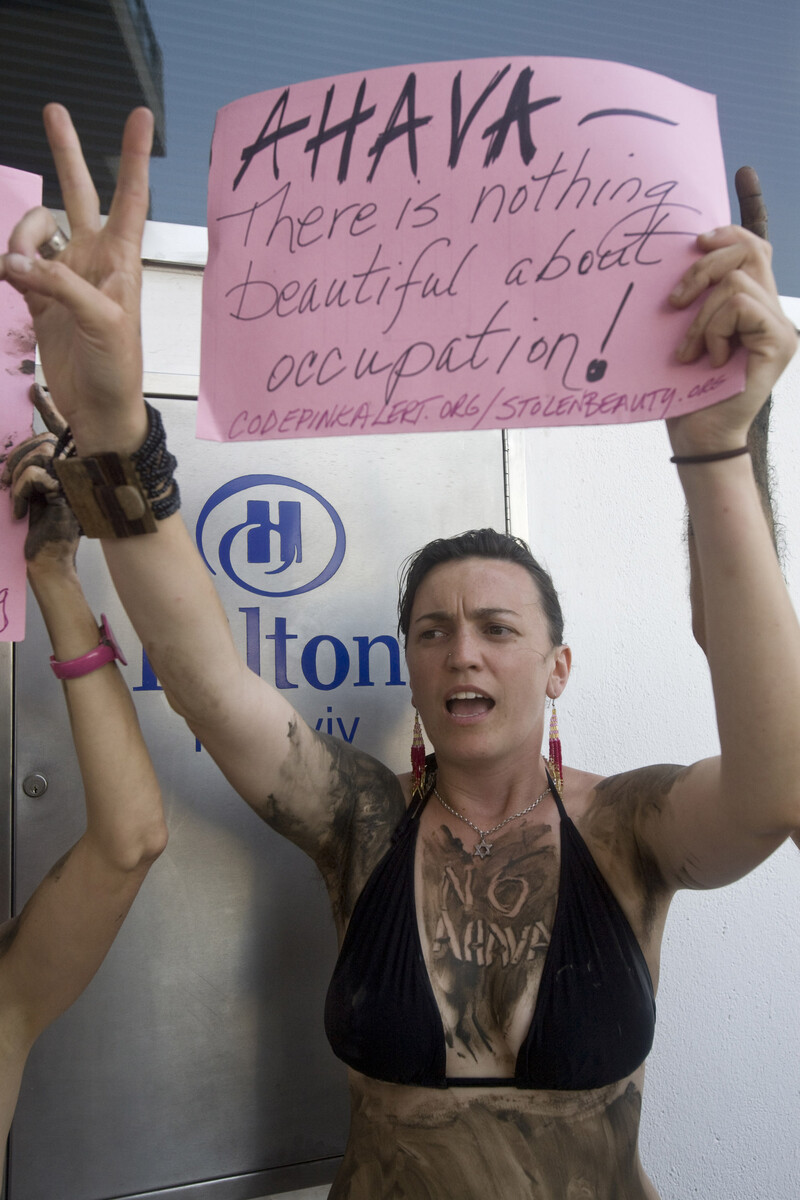Rights and Accountability 3 September 2015

Ahava is the target of a major boycott campaign.
ActiveStillsA careful examination of documents prepared by the Brussels bureaucracy leads me to the conclusion that such a diktat — albeit a subtle and carefully worded one — was issued.
During the past few years, the European Commission, the EU’s executive bureaucracy, has been questioned by many Palestine solidarity activists on why it approved scientific research grants to the cosmetics-maker Ahava.
The EU hierarchy was — rightly — made to feel awkward by these questions. Ahava’s main factory is located in a Jewish-only settlement in the West Bank; like all other nations in the world, EU governments regard Israel’s construction and expansion of those colonies as contrary to international law.
Rather than confessing they were in the wrong, the Commission’s representatives were told to say they had no option than to accommodate Ahava.
In July 2013, Robert-Jan Smits, head of the Commission’s research department, wrote a briefing note on Ahava for Máire Geoghegan-Quinn, a veteran Irish politician then overseeing the EU’s science program, and her advisers.
Smits told Geoghegan-Quinn’s team that it should expect further questions on Ahava from the EU’s elected representatives. The “line to take,” he added, was that funding of Ahava’s activities in the occupied West Bank “remains permitted.”
Easy to hoodwink
In his note — attached below — Smits claimed that Ahava was “formally established” in Israel and was therefore eligible for funding.
Those words betray how easy it has been for Israeli firms and institutions to hoodwink EU officials.
For administrative purposes, Ahava gives an address in Lod, a city near Tel Aviv. Previously named Lydda, it was the scene of a massacre and large-scale expulsions of Palestinians by Zionist forces in 1948, the year Israel was established.
Until recently, the EU hierarchy has been happy to overlook that Ahava’s real headquarters are in Mitzpe Shalem, an Israeli settlement in the occupied West Bank. As local authorities in Israeli settlements own part of the firm, the EU’s aid to Ahava is tantamount to a direct subsidy for the occupation.
Another document prepared for Geoghegan-Quinn stated that the Commission’s in-house lawyers had given advice on the surrounding issues.
Excuses
The lawyers were not perturbed, according to that paper. In a comical twist, the document added that there was nothing to stop Ahava from undertaking EU-funded research in the occupied West Bank “in the same way as we cannot prevent” a Belgian-registered “legal entity” from undertaking activities in the US.
Ahava was not a bit player in the EU’s science program. Around the same time that Smits wrote his July 2013 note, the firm was tasked with coordinating an initiative on developing new anti-aging products. Smits and his colleagues earmarked some €6 million ($8 million) for that initiative.
Later in July 2013, the EU published “guidelines” stipulating that research undertaken within Israel’s settlements in the West Bank would not receive any further funding.
Those guidelines drew an angry response from the Israeli government and its supporters. Following intense lobbying, Geoghegan-Quinn promised Israel’s supporters that they would be implemented in a “flexible” manner.
Smits has displayed such flexibility.
On several occasions lately, I’ve contacted him about grants he has authorized for Hebrew University of Jerusalem.
I’ve provided Smits with evidence — some of it from Hebrew University’s own publications — about how that college has been encroaching into land that Israel occupied in 1967. While his political masters declare their opposition to Israel’s land grabs in occupied East Jerusalem and elsewhere in the West Bank, Smits has repeatedly tried to fob me off.
Hebrew University’s “place of establishment,” he says, is within Israel’s pre-1967 borders. So everything is okay?
I now realize that Smits has been making that kind of excuse for a number of years. He has been getting away with it. But the experience of Ahava shows why he would be foolish to be complacent.
Feeling the heat from an international boycott campaign, Ahava has signaled that it may quit its factory in the West Bank. After Ahava shed one-quarter of its staff, one of its leading shareholders announced this week that the firm is being sold to a Chinese investor.
Ahava’s woes are among many indications that the Palestine solidarity movement is having an impact. EU officials who continue abetting Israel’s apartheid system will one day run out of excuses.






Comments
Hebrew University and Ahava funding
Permalink tom hall replied on
Smits' threadbare rationale is a disgrace. He knows that the Occupation is a criminal enterprise and that this lawlessness contaminates all aspects of Israeli business operations. A company like Ahava with factories, outlets or other enterprises within the Occupied Territories clearly falls under the EU funding ban, regardless of where it lists its headquarters. As for Hebrew University, the reasons for its proposed exclusion are many, from theft of land to mistreatment of Palestinian students, and extensive business relations with illegal settlements.
Not only is Smits aware of these facts- it's inconceivable that he doesn't know- but Maire Geoghegan-Quinn knows them, too. Frankly, on this one, her political pedigree is showing.
WHAT INTERNATIONALLY RECOGNIZED BORDERS???
Permalink Peter Loeb replied on
The international community never recognized "Eretz Israel" and
Israel never acknowledged borders, lines etc. of international law.
See decision of the ICC etc.
---Peter Loeb, Boston, MA, USA
Horizon 2020 - EU Research Funding
Permalink Martina Weitsch replied on
Whilst I totally agree with the tenor of this piece, I think it's worth highlighting that the letter from Smits to the Commissioner makes it clear that the project in question was funded under FP7 and that under Horizon 2020 - its successor programme - the situation is different and that the Guidelines agreed by the EU will apply. It's far from ideal but it is a step in the right direction.